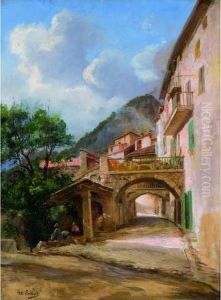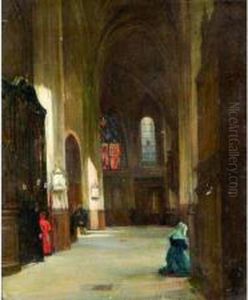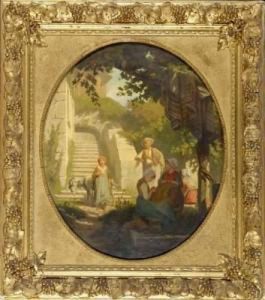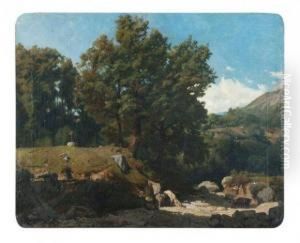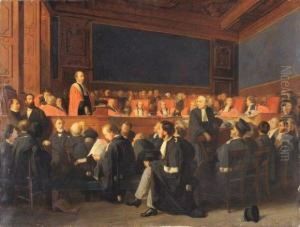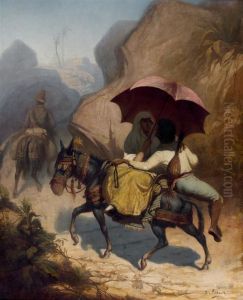Diodore Charles Rahoult Paintings
Diodore Charles Rahoult was a French painter born in 1823 in Grenoble, France. His artistic journey began in his hometown, but his talent and ambition soon led him to Paris, the heart of the art world in the 19th century. Rahoult's work is often associated with the Orientalist movement, a trend among European artists that focused on depicting scenes from the East, including landscapes, people, and cultures of the Ottoman Empire, North Africa, and the Middle East. This fascination with the Orient was partly inspired by the Romantic movement's search for the exotic and partly by France's colonial interests in North Africa.
Rahoult studied under renowned artists of his time, which helped him hone his skills in capturing the intricate details and vibrant colors characteristic of Orientalist paintings. He exhibited his works at the Paris Salon, the official art exhibition of the Académie des Beaux-Arts in Paris, where he gained recognition and accolades for his contributions to the Orientalist genre. His paintings often depicted bustling marketplaces, serene landscapes, and portraits of people in traditional attire, all rendered with a meticulous attention to detail and a deep appreciation for the subjects.
Throughout his career, Rahoult's works were celebrated for their artistic merit as well as their ability to provide a glimpse into the lives and landscapes of regions that were largely unknown to his European audience. His paintings are a testament to the allure of the exotic and the power of art to bridge cultural divides. Despite his relatively short life, Rahoult left behind a legacy that continues to be appreciated by art historians and collectors alike. Diodore Charles Rahoult died in 1874, leaving a body of work that remains an important part of the Orientalist canon and a valuable window into the 19th-century fascination with the East.
